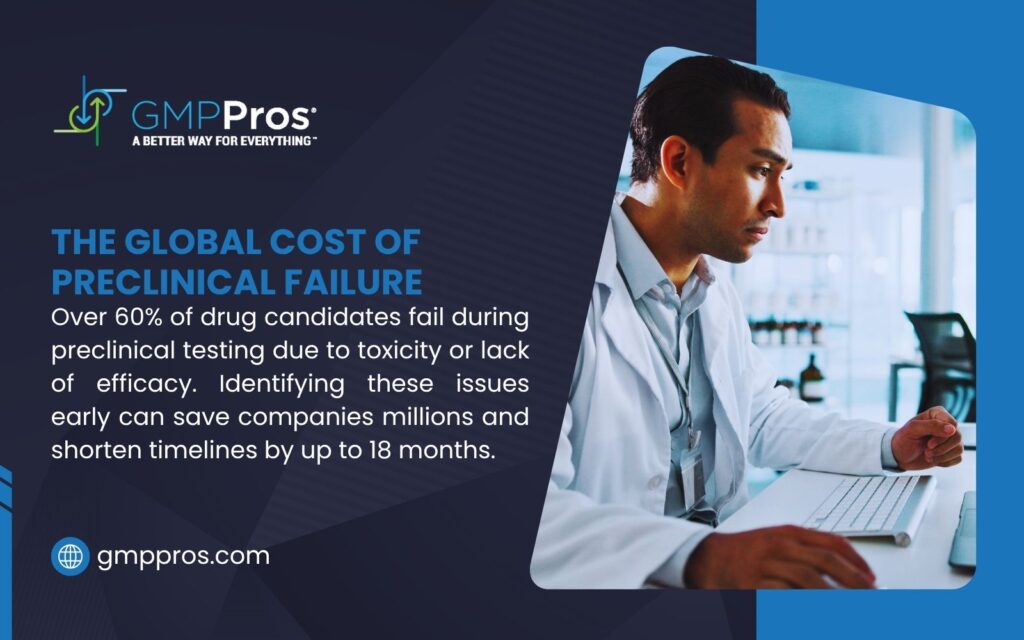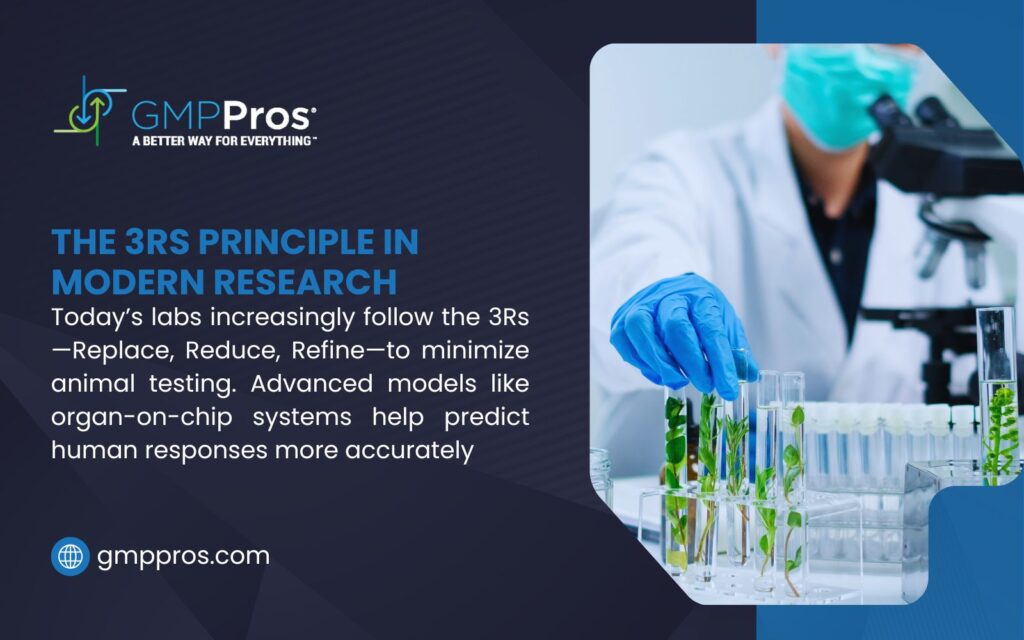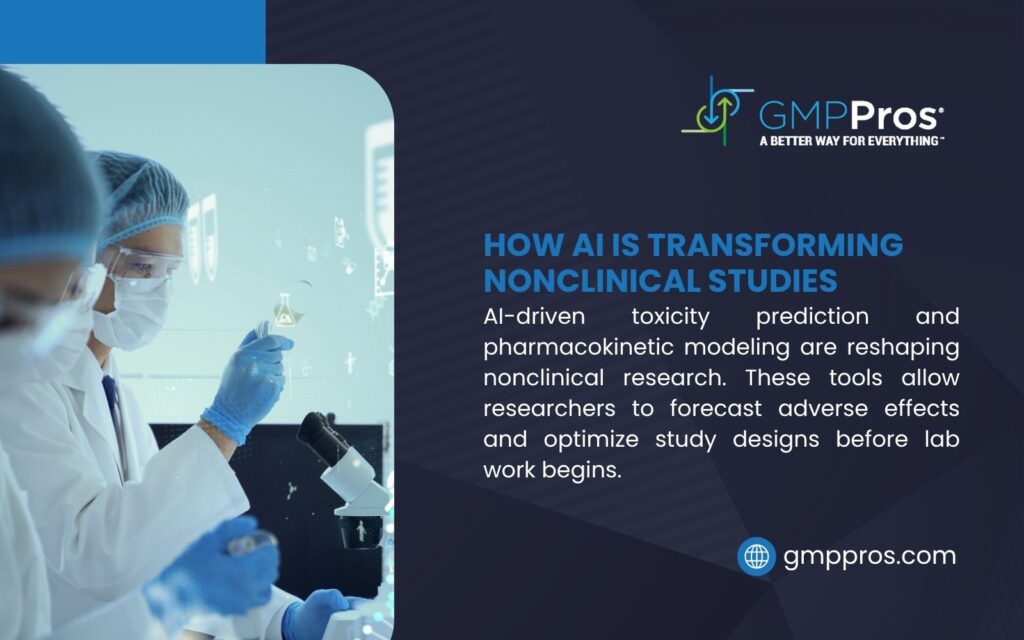Knowing the difference between preclinical and nonclinical studies can make a big impact. It helps drug developers plan smarter programs, explain their work more clearly to the FDA, and use time and money more wisely.
This guide explains everything you need to know about preclinical vs nonclinical studies in pharmaceutical development.
What Does Preclinical Mean?
Preclinical studies refer to research conducted before clinical trials in humans. This term emphasizes the timing and sequence of development activities.
These studies typically occur after initial discovery and lead optimization. They generate the safety and efficacy data needed to support an Investigational New Drug application.
Preclinical work includes in vitro experiments, animal studies, and other laboratory research. The goal is to demonstrate that a drug candidate is safe enough to test in humans.
| Study Phase | Primary Purpose | Typical Duration |
| Discovery | Identify drug candidates | 2-4 years |
| Preclinical | Safety and efficacy testing | 1-2 years |
| Clinical Trials | Human testing | 6-8 years |
The FDA requires specific preclinical data before allowing clinical trials. This includes toxicology studies, pharmacokinetics, and preliminary efficacy data.
Companies working on ind enabling studies focus heavily on preclinical requirements. These studies form the foundation for regulatory submissions and clinical trial design.
What Does Nonclinical Mean?
Nonclinical studies encompass all research activities that don’t involve human subjects. This broader term includes preclinical work but extends beyond it.
Nonclinical studies can occur at any point during development. They might happen before clinical trials, during clinical development, or even after product approval.
The term appears frequently in regulatory documents and FDA guidance. The agency often uses “nonclinical” when discussing requirements that apply throughout the product lifecycle.
Nonclinical work supports various development needs. Early nonclinical studies establish basic safety profiles. Later nonclinical studies might investigate new formulations, manufacturing changes, or label expansions.
Key Differences Between Preclinical vs Nonclinical
The distinction between preclinical vs nonclinical terminology matters for regulatory communication and development planning. While related, these terms serve different purposes.
Timing represents the primary difference. Preclinical specifically refers to pre-human testing, while nonclinical applies to any non-human research regardless of timing.
Scope also differs significantly. Preclinical is narrower, focusing on the initial safety and efficacy work. Nonclinical is broader, covering all animal and laboratory studies throughout development.
| Factor | Preclinical Wins | Nonclinical Wins | It’s a Tie |
| Timing Specificity | ✓ (clearly defines pre-human phase) | ||
| Regulatory Preference | ✓ (FDA standard terminology) | ||
| Development Scope | ✓ (covers entire lifecycle) | ||
| Scientific Communication | ✓ (both widely understood) | ||
| IND Application Context | ✓ (describes the phase) | ||
| Post-Approval Studies | ✓ (includes all stages) |
Regulatory context affects which term to use. FDA guidance documents predominantly use “nonclinical” terminology. Using this language in regulatory submissions and meetings improves communication clarity.
The development stage determines practical implications. Early-stage companies focus on preclinical work to enable clinical trials. Later-stage companies conduct nonclinical studies to support line extensions or manufacturing changes.

Types of Studies in Preclinical Development
Putting the terms preclinical vs nonclinical aside, what really matters is knowing the types of studies you need. Each study answers different scientific questions and meets specific regulatory requirements, which helps you plan your development program more effectively.
Toxicology studies assess potential adverse effects. Single-dose studies evaluate acute toxicity while repeat-dose studies examine effects of prolonged exposure.
Pharmacokinetics studies track drug absorption, distribution, metabolism, and excretion. These studies help predict human dosing and identify potential drug interactions.
Safety pharmacology evaluates effects on vital organ systems. Cardiovascular, respiratory, and central nervous system studies are typically required.
Efficacy studies demonstrate that drug candidates work as intended. Animal models of disease provide preliminary evidence of therapeutic benefit.
| Study Type | Purpose | Regulatory Requirement |
| Acute Toxicity | Single-dose safety | Required for IND |
| Repeat-Dose Toxicity | Long-term safety | Required for IND |
| Pharmacokinetics | Drug behavior in body | Required for IND |
| Safety Pharmacology | Vital organ effects | Required for IND |
| Efficacy Models | Proof of concept | Recommended |
Nonclinical Studies Throughout Development
Nonclinical studies continue well beyond the preclinical phase. Understanding when and why you need additional nonclinical work helps optimize development timelines.
During clinical development, nonclinical studies support protocol amendments and safety monitoring. If clinical trials reveal unexpected findings, nonclinical studies help investigate mechanisms.
Manufacturing changes often require nonclinical studies. Process modifications might necessitate comparability studies to demonstrate equivalent quality.
Companies working on tech transfer pharma projects frequently need nonclinical bridging studies. These studies connect products made at different sites or with modified processes.
Post-approval nonclinical work supports label expansions, new formulations, and lifecycle management. These studies enable product improvements and market expansion.
Regulatory agencies may request additional nonclinical data at any time. Being prepared to conduct these studies quickly maintains development momentum.
Regulatory Requirements for Preclinical vs Nonclinical Studies
The FDA has specific expectations for nonclinical studies regardless of when they occur. Understanding these requirements prevents regulatory delays.
Good Laboratory Practice regulations govern most nonclinical studies. GLP compliance ensures study quality and data integrity. Not all nonclinical work requires GLP, but regulatory submissions typically need GLP studies.
Study report formats follow standard structures. Clear documentation of methods, results, and conclusions helps regulatory review.
Companies developing 505b2 drugs can sometimes reference existing nonclinical data. This reduces the preclinical work needed but requires careful regulatory strategy.
The target product profile should inform nonclinical study design. Studies must generate data relevant to your intended indication, patient population, and dosing regimen.
ICH guidelines provide international standards for nonclinical testing. Following these guidelines facilitates development in multiple markets.
Planning Your Nonclinical Development Program
Strategic planning of preclinical vs nonclinical studies optimizes resources and timelines. A well-designed program generates necessary data efficiently.
Start with regulatory requirement mapping. Identify all studies needed for your IND submission and subsequent regulatory milestones.
Prioritize studies based on critical path analysis. Some studies must complete before others can start. Understanding dependencies prevents bottlenecks.
Build in contingency time for unexpected findings. Nonclinical studies sometimes reveal issues requiring additional investigation.
Consider outsourcing versus internal capabilities. Contract research organizations provide specialized expertise and capacity flexibility.
| Planning Factor | Key Considerations | Impact on Timeline |
| Study Sequencing | Dependencies and prerequisites | 6-12 months |
| Resource Availability | Internal vs outsourced capacity | Variable |
| Regulatory Strategy | Pathway selection and requirements | 3-18 months |
There are many companies that benefit from life science project management consulting when planning complex nonclinical programs. Professional project management reduces delays and improves execution.

Common Challenges in Nonclinical Development
Understanding typical problems in preclinical vs nonclinical studies helps you avoid them. Many challenges follow predictable patterns.
Study design flaws waste time and resources. Poorly designed experiments fail to answer critical questions or generate data that regulatory agencies won’t accept.
Species selection affects study relevance. The wrong animal model might not predict human responses accurately.
Dose selection requires careful consideration. Doses too low might miss toxic effects while doses too high produce irrelevant findings.
Sample size and statistical power determine whether studies can detect meaningful differences. Underpowered studies waste resources without generating useful data.
Timeline optimism causes frequent problems. Nonclinical studies typically take longer than initially planned. Buffer time in schedules prevents downstream delays.
Cost Considerations for Nonclinical Studies
Budget planning for preclinical vs nonclinical work requires understanding cost drivers. These studies represent significant development expenses.
Study complexity affects costs dramatically. Simple in vitro studies might cost thousands while comprehensive toxicology programs cost millions.
Animal studies are particularly expensive. Housing, care, and specialized procedures add up quickly. Primate studies cost significantly more than rodent studies.
GLP compliance increases costs but ensures regulatory acceptance. Non-GLP studies cost less but may need repeating under GLP conditions.
| Study Category | Typical Cost Range | Duration |
| In Vitro Screening | $10K-50K | 1-3 months |
| Rodent Toxicity | $100K-300K | 3-6 months |
| Large Animal Studies | $300K-1M+ | 6-12 months |
Contract research organization selection impacts both cost and quality. Cheaper isn’t always better when study failures require expensive repeats.
Strategic study design reduces costs without compromising quality. Combining endpoints in single studies or using sequential designs can save money.
The Role of GLP in Nonclinical Studies
Good Laboratory Practice compliance is central to regulatory nonclinical studies. Understanding GLP requirements helps plan compliant programs.
GLP regulations ensure study quality and data integrity. These standards cover facility operations, personnel qualifications, equipment maintenance, and documentation practices.
Not all nonclinical studies require GLP compliance. Early exploratory studies often use non-GLP approaches. However, studies supporting regulatory submissions typically need GLP.
GLP facilities must maintain quality assurance programs. Independent QA units audit studies and report directly to management.
Study directors bear responsibility for overall study conduct. This role requires specific qualifications and extensive documentation.
Raw data integrity is fundamental to GLP. All observations must be recorded promptly and accurately. Changes require clear documentation and justification.
Integrating Nonclinical Data with Clinical Development
Preclinical vs nonclinical data must integrate smoothly with clinical development. This integration ensures a consistent development strategy.
Nonclinical findings inform clinical trial design. Safety margins from toxicology studies determine starting doses. Pharmacokinetic data guides dosing schedules.
Clinical results sometimes trigger additional nonclinical investigations. Unexpected clinical findings require mechanistic understanding that nonclinical studies provide.
Regulatory interactions often focus on how nonclinical data supports clinical plans. Clear integration of nonclinical and clinical information strengthens regulatory submissions.
Companies working on 505b2 application strategies must carefully integrate nonclinical bridging studies with clinical data. This integration justifies regulatory approval based on existing knowledge.
Technology and Innovation in Nonclinical Research
Advances in science and technology are changing how companies approach preclinical vs nonclinical studies. New methods offer better predictions and reduced animal use.
In vitro methods increasingly replace animal studies. Organ-on-chip technology and 3D tissue cultures provide more relevant human data.
Computational modeling predicts toxicity and pharmacokinetics. In silico approaches screen candidates early and prioritize experimental work.
Imaging technologies enable longitudinal studies in the same animals. This reduces animal numbers while providing richer data.
Biomarkers improve study sensitivity and relevance. Novel endpoints detect effects earlier and predict human responses better.
However, regulatory acceptance of new methods takes time. Traditional animal studies remain required for most regulatory submissions.

Get Expert Support for Your Nonclinical Development Program
GMP Pros specializes in helping pharmaceutical and biologic manufacturers develop efficient nonclinical study programs that support regulatory success. Our embedded consulting approach provides experienced scientists and project managers who work directly with your team.
We help plan, execute, and document nonclinical studies that meet FDA requirements while optimizing timelines and budgets. Our team understands how to integrate nonclinical work with overall development strategy.
Contact GMP Pros today to learn how our regulatory strategy and project management expertise can strengthen your nonclinical development program and accelerate your path to approval.

